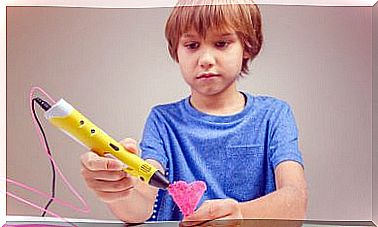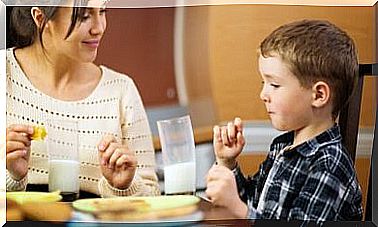Tips For Lowering Fever In Children

Fever tends to strike children with a certain frequency. This is because at this age their bodies have to fight against different agents to create antibodies that adults already have.
Fever manifests itself with an increase in body temperature as a reaction of the body to some disease or infection. It is possible to check if someone has a fever with the help of a thermometer. If it reads approximately 38°C or more, it means that your body temperature is above normal. In this case, you should try to download it as soon as possible.
You should consult your doctor if, in addition to fever, your child has any of the following symptoms:
- cough or phlegm
- Presence of vomiting and diarrhea or, on the contrary, if she does not urinate or has a bowel movement.
- Very pale skin and the child is not very active.
- any type of rash
- If the child does not feel like eating.
How to lower fever in children?
Next, we offer a series of solutions to try to bring down fever in children as quickly as possible:
take a warm water bath
To lower the child’s body temperature and lower the fever, you can give him a bath to try to cool the child’s body. It is not necessary for the bath to be with cold water. Filling the bathtub with water at a temperature of about 37°C is sufficient. In this way, the child will have contact with water at a temperature lower than yours, without getting too cold.

The ideal is to keep the child in the water for a while. Thus, the water will gradually cool down and, consequently, the child’s body temperature will also decrease. This process also helps you to relax.
Refresh your forehead, neck, hands and legs
Wet a cloth or swab with water at room temperature. Wipe this cloth over your child’s forehead, hands, legs and neck. This is another way to lower your child’s temperature without having to take a bath in case he or she is very tired and doesn’t want to move too much. Also, it’s a great option for cooler climates.
As you see that the compresses are getting warmer, wet again and repeat the same process. This can be done as many times as necessary until the fever subsides. To be sure, always check with the thermometer.
Keep a good room temperature
It is very important that the temperature of the environment where the child is found is balanced. That is, neither too cold nor too hot. It is also advisable that this environment is well ventilated to provide you with fresh air.
If on warmer days you usually use a fan or air conditioner, be careful not to expose the baby directly to the cold draft. It is recommended that he stay away from these devices and receive only a gentle breeze.
take off some clothes
In order for the fever not to rise, it is necessary to try to lower the child’s body temperature. If it’s winter, take off a layer of clothing. In summer try to keep your child as cool as possible.
Another option is to take off shoes and socks and leave the child’s feet free. If it’s a really hot day, try putting her feet in contact with a cool surface. Depending on the child’s age and what is most comfortable for him, you can choose to place it on the floor, in a wet cloth, or directly in the water.
avoid dehydration
The child will start to sweat and lose their appetite from the first moment they start having a fever. That’s why it’s important to try to keep her hydrated at all times. If the child usually plays outside, be aware of the incidence of sunlight, especially during the summer. Make sure the child stays in the shade and doesn’t directly sunbathe.
To reduce fever in children it is recommended that they drink serum. However, as in most cases this drink doesn’t seem to please them, a good option is to replace it with lots of water, juices, jellies, or some hot soup, if it’s winter.

rest and rest
Finally, the best cure for fever in children is to rest and rest. When they get a fever, many children are more tired and don’t feel like doing anything. However, there are others who, even when they have a fever, do not have this indisposition. They are not aware of their own body temperature, running and playing normally.
Despite this, it is recommended that the child be calmer and do activities that do not require a lot of effort, for example, watching a movie or reading a book.
And remember:
Fever is an illness, and as such, a doctor is the one who will make a diagnosis if any kind of treatment is needed. Never medicate your child yourself without consulting a specialist. Making decisions on your own can put your children’s health in jeopardy.
If even after putting these tips into practice, you find that your child’s fever has not gone down, or on the contrary, has gone up, go to your pediatrician immediately. Also seek medical help if the fever lasts for two consecutive days.









